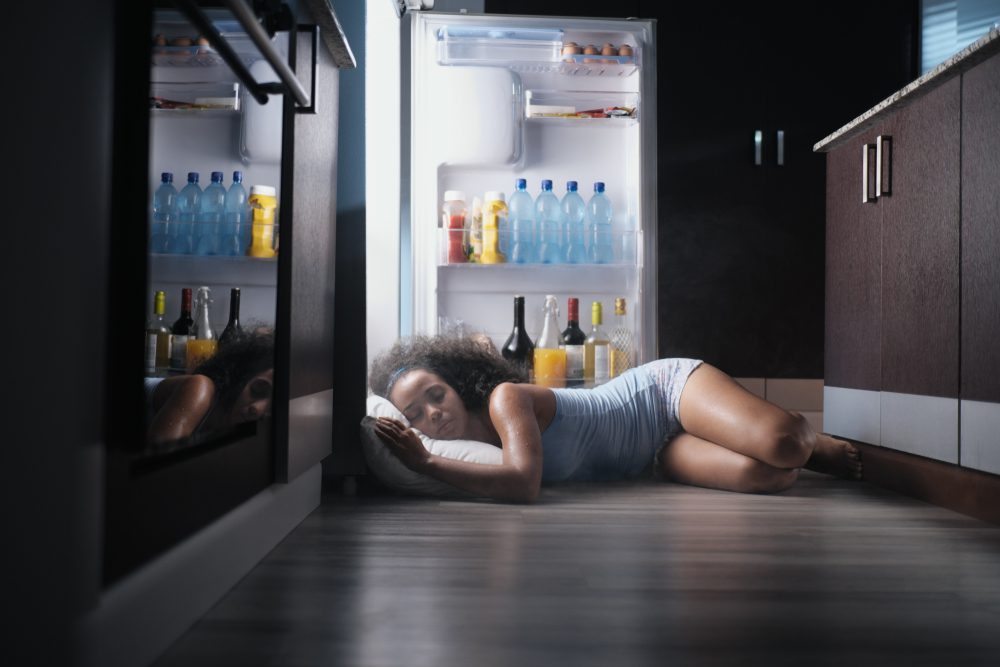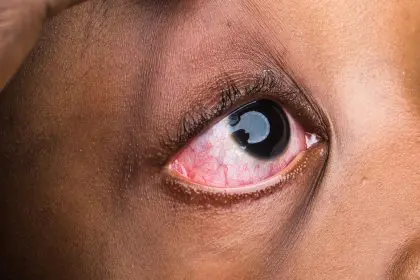While most people eagerly anticipate summer’s arrival with visions of beach days, barbecues, and endless sunshine, there’s a hidden reality that millions of Americans face each year. For these individuals, the season of supposed joy becomes a time of unexpected darkness, anxiety, and despair. Welcome to the lesser-known world of summer seasonal affective disorder, a condition that turns the happiest season into an emotional battleground.
Summer seasonal affective disorder, commonly referred to as summer SAD, represents the flip side of its more famous winter counterpart. While winter SAD affects approximately 5% of adults in the United States, summer SAD impacts a smaller but significant portion of the population, with studies suggesting that up to 1% of Americans experience this reverse seasonal depression. The condition typically emerges in late spring or early summer and can persist through the hottest months of the year.
The surprising reality of summer depression
Unlike winter SAD, which is often attributed to lack of sunlight and vitamin D deficiency, summer SAD presents a paradox that has puzzled researchers for decades. How can increased sunlight and longer days trigger depression rather than alleviate it? The answer lies in the complex interplay between our circadian rhythms, brain chemistry, and environmental factors.
Dr. Kelly Rohan, a leading researcher in seasonal affective disorders at the University of Vermont, explains that summer SAD likely stems from the disruption of our natural sleep-wake cycles caused by extended daylight hours. The excessive light exposure can suppress melatonin production for longer periods, leading to sleep disturbances that cascade into mood disorders.
The heat itself also plays a crucial role. Rising temperatures can increase cortisol levels, the body’s primary stress hormone, while simultaneously depleting serotonin and dopamine, the neurotransmitters responsible for feelings of happiness and well-being. This biological perfect storm creates the ideal conditions for summer depression to flourish.
Recognizing the warning signs
Summer SAD manifests differently than its winter counterpart, making it particularly challenging to identify and treat. While winter SAD typically involves oversleeping, overeating, and weight gain, summer SAD presents with almost opposite symptoms that can be easily mistaken for other conditions.
The most common indicators include persistent insomnia or severely disrupted sleep patterns. Unlike typical insomnia, summer SAD-related sleep issues often involve difficulty falling asleep due to extended daylight hours and an overactive mind that refuses to wind down. Many sufferers report lying awake for hours, their thoughts racing despite physical exhaustion.
Appetite changes represent another hallmark of summer SAD, but not in the way most people expect. Rather than increased hunger, individuals often experience a significant decrease in appetite, leading to unintentional weight loss and nutritional deficiencies. This can create a vicious cycle where poor nutrition further exacerbates mood symptoms.
Restlessness and agitation become constant companions for those experiencing summer SAD. The feeling of being trapped indoors by oppressive heat while simultaneously feeling overwhelmed by social expectations creates a unique form of psychological distress. Many describe feeling like they’re vibrating with anxious energy yet lacking the motivation to channel it productively.
Physical symptoms often accompany the emotional ones, creating a full-body experience of discomfort. Persistent headaches, muscle tension, digestive issues, and unexplained aches and pains are frequently reported. These physical manifestations can be particularly frustrating because they often lack an obvious medical cause, leading to feelings of invalidation and confusion.
The hidden triggers lurking in summer
Several factors unique to summer months can exacerbate SAD symptoms, creating a perfect storm of environmental and social pressures. The intense social expectations surrounding summer fun can create overwhelming pressure for those already struggling with mood regulation. Social media compounds this issue, with endless streams of vacation photos and outdoor adventures serving as constant reminders of what sufferers feel they should be enjoying but cannot.
Body image concerns often intensify during summer months when lighter clothing and swimwear become the norm. For individuals already dealing with depression and anxiety, the pressure to have a “beach body” can trigger or worsen existing mental health struggles. This societal pressure creates additional stress that feeds directly into the summer SAD cycle.
Financial strain represents another often-overlooked trigger. Summer activities, vacations, and increased utility bills from air conditioning can create economic stress that compounds existing mental health challenges. The expectation to participate in costly summer activities while managing depression can create feelings of isolation and inadequacy.
Revolutionary coping strategies that actually work
Managing summer SAD requires a multifaceted approach that addresses both the biological and psychological aspects of the condition. The key lies in creating a personalized strategy that works with, rather than against, the unique challenges of the summer season.
Temperature regulation becomes crucial for managing summer SAD symptoms. Creating cool, comfortable environments can significantly impact mood and sleep quality. Investing in blackout curtains, quality air conditioning, or even portable cooling devices can make the difference between a manageable day and an overwhelming one. Some individuals find relief in planning activities during cooler parts of the day, such as early morning or evening hours.
Light management strategies prove essential for regulating disrupted circadian rhythms. While it may seem counterintuitive, some summer SAD sufferers benefit from reducing light exposure during peak daylight hours. This might involve wearing sunglasses more frequently, using light-filtering window treatments, or spending more time in naturally dimmer environments during the day.
Hydration takes on critical importance during summer months, particularly for those experiencing SAD symptoms. Dehydration can worsen mood symptoms, increase anxiety, and disrupt sleep patterns. The goal isn’t just drinking water but maintaining proper electrolyte balance through foods rich in potassium, magnesium, and sodium.
Building your summer survival toolkit
Exercise adaptation becomes crucial during summer months when traditional outdoor activities may feel overwhelming or uncomfortable. Indoor alternatives like swimming, yoga, or early morning walks can provide the mood-boosting benefits of physical activity without the stress of heat exposure. Some individuals find that shorter, more frequent exercise sessions work better than longer workouts during summer months.
Nutrition strategies must account for decreased appetite and increased heat stress. Focus shifts to nutrient-dense, easily digestible foods that don’t require extensive preparation in hot kitchens. Cold soups, smoothies packed with fruits and vegetables, and light protein sources can help maintain proper nutrition even when appetite is diminished.
Sleep hygiene becomes exponentially more important for summer SAD management. Creating the ideal sleep environment might involve investing in cooling mattresses, using white noise machines to mask summer sounds, or adjusting bedtime routines to account for longer daylight hours. Some individuals benefit from light therapy in reverse, using light-blocking glasses in the evening to signal their bodies that it’s time to wind down.
Professional treatment options that provide real relief
When self-management strategies aren’t sufficient, professional treatment options can provide significant relief for summer SAD symptoms. Cognitive behavioral therapy specifically adapted for seasonal affective disorders has shown remarkable success rates in clinical trials. This approach helps individuals identify and change thought patterns that contribute to seasonal depression while developing practical coping skills.
Light therapy for summer SAD works differently than its winter counterpart. Instead of bright light exposure, some individuals benefit from dawn simulation or carefully timed light restriction. Working with a qualified professional ensures that light therapy is implemented safely and effectively.
Medication management may be necessary for some individuals, particularly those with severe symptoms. Antidepressants can be adjusted seasonally, with some people benefiting from increased dosages during summer months or switching to medications that work better in hot weather conditions.
Creating your personalized action plan
The key to successfully managing summer SAD lies in developing a personalized approach that acknowledges your unique triggers and circumstances. Start by tracking your symptoms and identifying patterns related to weather, social situations, and daily routines. This information becomes invaluable for predicting difficult periods and implementing preventive strategies.
Build a support network that understands the reality of summer depression. This might include family members, friends, or support groups specifically focused on seasonal affective disorders. Having people who understand that your struggles are real and valid can make an enormous difference in your recovery journey.
Summer seasonal affective disorder may cast shadows over the sunny season, but it doesn’t have to define your entire summer experience. With proper understanding, effective coping strategies, and professional support when needed, it’s possible to reclaim joy and find balance even during the most challenging months. Remember that seeking help is a sign of strength, not weakness, and that millions of others share similar struggles. Your mental health deserves the same attention and care as your physical health, regardless of what season it is.


















